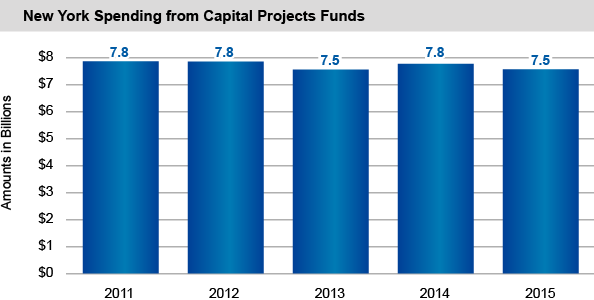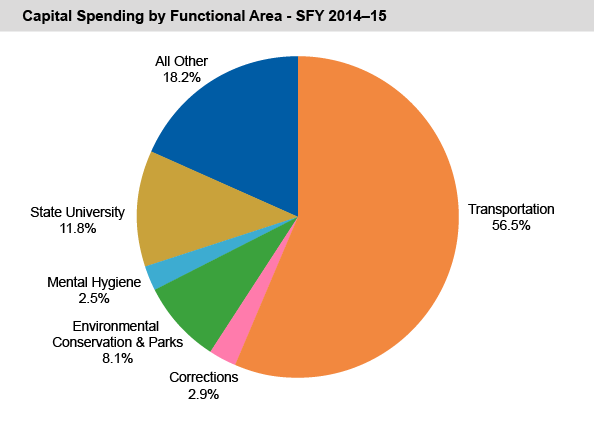The deterioration of capital assets can weaken the State’s economy and its ability to attract and retain business, while a robust, efficiently managed capital investment program can support economic growth. Capital assets include not only highways and bridges, but also facilities for education, government, health and recreation.
Capital Spending Has Decreased Over the Past Five Years
- From 2011 to 2015, capital spending:
- decreased overall by $297 million (3.8 percent).
- for transportation increased by $551 million (14.8 percent).
- for All Other* categories decreased by $872 million (38.9 percent). This decrease is due to reductions in capital spending by public authorities.
- In the last 20 years, the share of nonfederal capital spending financed through current operations on a pay-as-you-go basis, rather than through borrowing, has averaged 39 percent, compared to 62 percent in 1995.
- For the next five years, the State projects:
- capital spending to average $11.3 billion per year; and
- the share of nonfederal capital spending financed on a pay-as-you-go basis to average 35 percent.
At the end of SFY 2014-15, the State reported $101.8 billion in capital assets, an increase of $1.4 billion (1.4 percent) from the prior year.
*All Other encompasses capital spending that does not fall under the transportation, State University, environmental conservation, parks, corrections and mental hygiene functional areas.


